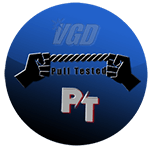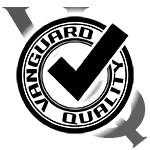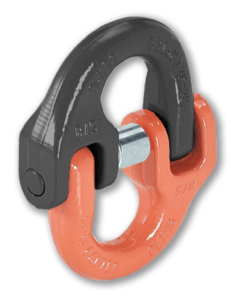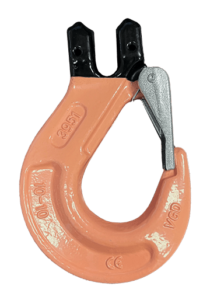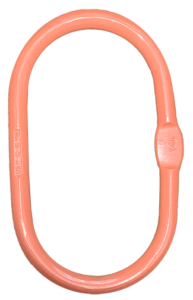
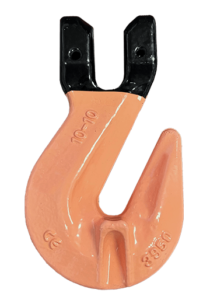
G10 VQ Grab Hook

- Advancements in materials and design have led to the development of specialized grab hooks like the cradle grab hooks. These hooks offer superior performance and safety compared to older designs.
Grade 100 VQ Grab Hook with saddle/cradle support, a top-tier lifting solution forged from high-strength alloy steel and engineered for superior performance and safety. Ideal for heavy-duty applications, this hook is compatible with G100 chains
- Forged specialty alloy steel, and then heat treated;
- Can be matched with G100 chains;
- Performance is increased by 25% compared with G80 products;
- Each Piece is tested at 2.5 times the working load limit;
- Fatigue testing is carried out on samples to 20,000 times;
- Strict sampling and breakage testing is conducted for each batch of products;
- 100% magnetic powder flaw detection is performed;
- 100% of the pins are tested to ensure they have the same hardness;
- Surface treatment: Powder Coated;
- Colour code: Peach with black tip;
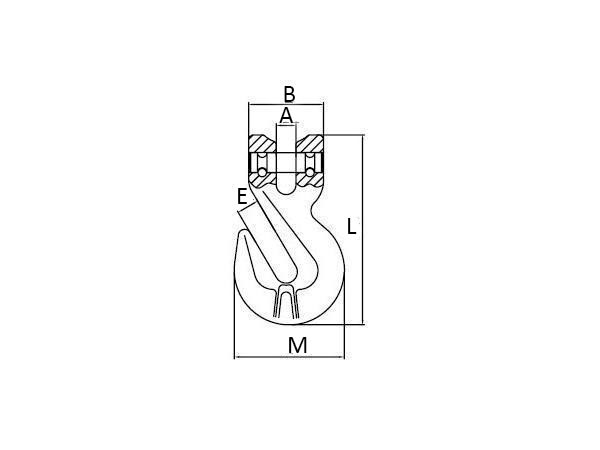
| Model | Part Number | WLL (t) | Breaking Load (t) | A±.05 | B±1 | E±1.5 | M±2 | L±2.5 | Weight (KG) |
|---|---|---|---|---|---|---|---|---|---|
| 10-VQGH1004-08 | 3950 5016 | 2.5 | 10 | 9.5 | 36 | 10.8 | 53 | 91.5 | .34 |
| 10-VQGH1004-10 | 3950 5024 | 4 | 16 | 12 | 46 | 13.5 | 72 | 126 | .82 |
| 10-VQGH1004-13 | 3950 5032 | 6.7 | 26.8 | 15 | 59 | 16.5 | 96 | 163.5 | 1.75 |
| 10-VQGH1004-16 | 3950 5040 | 10 | 48 | 17.5 | 70 | 19.2 | 112.5 | 183.5 | 2.88 |
| 10-VQGH1004-20 | 3950 5048 | 16 | 64 | 24 | 85 | 24 | 143 | 224 | 4.84 |
Other Products
Inspection Considerations for G80 and G100 Alloy Sling Hook
Inspecting a Grade 100 grab hook is essential to ensure safety and compliance with industry standards. Here’s a comprehensive guide to performing this inspection:
Visual Inspection
Check for Identification: Verify that the grab hook has clear identification markings, including the grade, manufacturer’s mark, and traceability code. These markings confirm that the hook is a genuine Grade 100 component.
Inspect for Deformation: Look for any signs of deformation such as bends, twists, or elongation. Deformed hooks indicate that the hook has been overloaded and should be removed from service.
Surface Examination: Inspect the hook for any cracks, gouges, nicks, and corrosion. Surface defects can weaken the hook and compromise its integrity. Pay special attention to the hook’s throat and body.
Check for Heat Damage: Inspect for any signs of heat exposure, such as discoloration. Heat can alter the material properties of the hook, making it unsafe for use.
Functional Inspection
Hook Throat Opening: Measure the throat opening of the hook to ensure it has not widened beyond the manufacturer’s specifications. An increased throat opening is a sign of overload and can be dangerous.
Proper Fit: Ensure the hook fits correctly with the chain or other components it is designed to connect. Misalignment or improper fit can indicate wear or deformation.
Measurement and Comparison
Dimensional Check: Use calipers or other precise measuring tools to check the dimensions of the hook against the manufacturer’s specifications. Focus on critical areas such as the throat opening, hook body, and any wear points.
Wear and Corrosion: Measure any wear on the hook, particularly in areas where it contacts the chain. Corrosion should also be checked, as it can weaken the hook over time.
Load Test (if required)
- Proof Load Test: Some standards and manufacturers may require a proof load test to ensure the hook can handle its rated capacity. This should be done according to the manufacturer’s guidelines and industry standards.
Record Keeping
Documentation: Record all findings in an inspection log. Include the date of inspection, condition of the hook, any defects found, and actions taken (such as removal from service).
Traceability: Maintain traceability records that link the grab hook to its inspection history. This is important for compliance with safety standards and for future reference.
Compliance Check
OSHA and Local Regulations: Ensure the inspection complies with OSHA regulations and any local safety standards. This may include additional requirements for documentation, frequency of inspections, and criteria for removing hooks from service.
Manufacturer Guidelines: Follow the manufacturer’s inspection and maintenance guidelines. These often include specific criteria for wear and deformation unique to their products.
Guidelines and References
- OSHA Standards: Check OSHA’s regulations for rigging hardware and sling inspection.
- WorkSafeBC: Refer to WorkSafeBC guidelines for regional compliance.
- Manufacturer’s Manual: Always refer to the specific manufacturer’s manual for detailed inspection procedures and criteria.
By following these steps, you can ensure that Grade 100 grab hooks are in safe working condition, preventing accidents and maintaining compliance with safety regulations. Regular inspections and proper documentation are essential to the longevity and reliability of lifting equipment.
Always check your local laws and governing bodies in your region to ensure compliance with all relevant regulations and standards for chain sling inspections.
Accuracy Disclaimer: While we strive to provide accurate and up-to-date inspection information, please be aware that regulations, standards, and guidelines may change. It is important to verify the information provided by your local governing bodies or relevant authorities to ensure compliance with current regulations and requirements.



